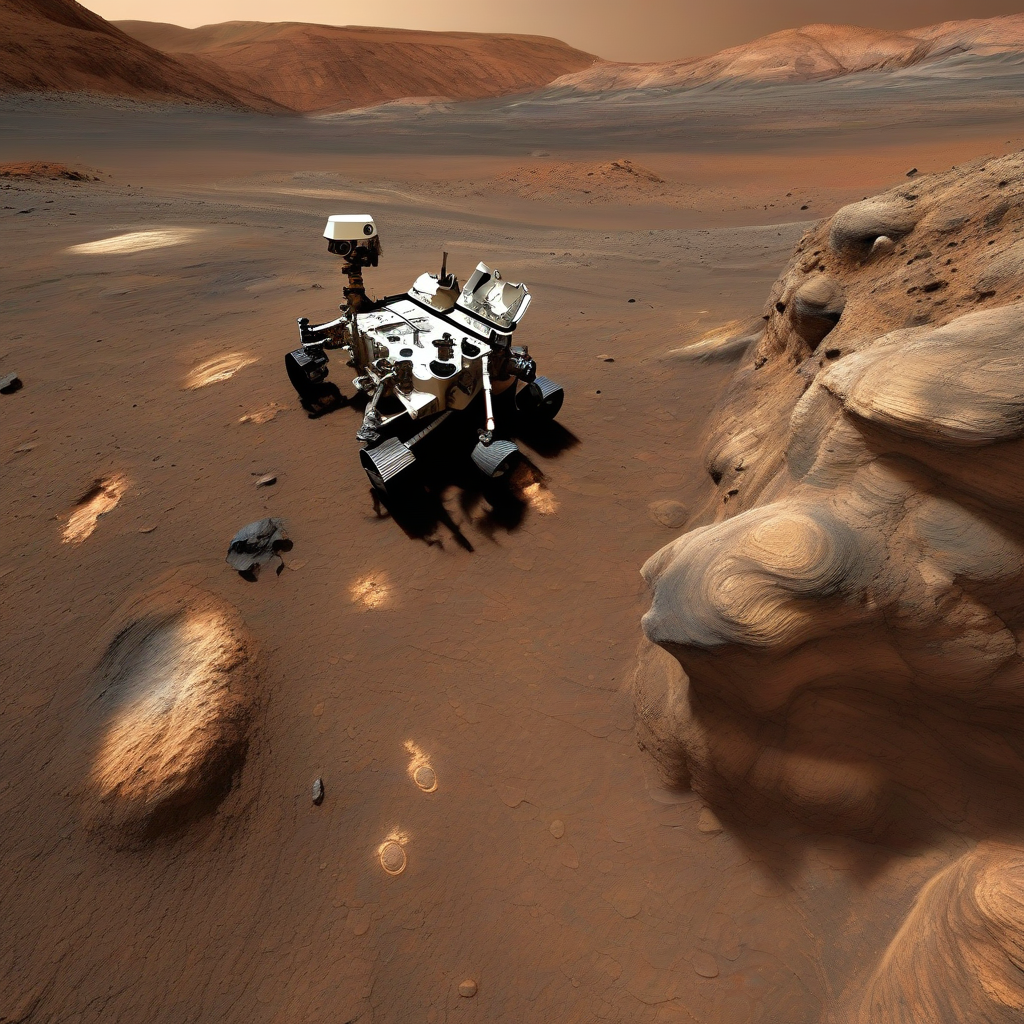# How NASA's Perseverance Rover Unlocks the Secrets of Ancient Martian Geology
Mars has captivated humanity’s imagination for centuries. Its blood-red hue, mysterious surface features, and the possibility of life have inspired generations of scientists, artists, and explorers. Today, NASA’s Perseverance rover is at the forefront of unraveling the secrets of Mars’ ancient geology. With cutting-edge instruments and an ambitious mission, it is helping us understand the Red Planet’s past and its potential to harbor life. But how exactly does Perseverance do it, and what have we learned so far? Let’s dive into the incredible story of this robotic geologist and the mysteries it’s uncovering.
---
A Mission to Explore Mars' Past
The Perseverance rover, part of NASA’s Mars 2020 mission, landed on Mars on February 18, 2021. Touching down in Jezero Crater—a 28-mile-wide basin that once housed an ancient lake—is no coincidence. Scientists believe that billions of years ago, this area was a bustling hub of water activity, complete with river deltas and potentially habitable environments. The rover’s primary goal is to study this ancient landscape, searching for signs of past life and collecting rock samples for eventual return to Earth.
What makes Perseverance unique is its dual role: part geologist and part astrobiologist. It is designed not only to analyze Mars’ surface but also to piece together the planet’s environmental history. By examining rock layers, detecting organic molecules, and observing mineral compositions, Perseverance acts as a time machine, taking us back to an era when Mars may have been teeming with rivers, lakes, and perhaps even microbial life.
---
Tools of the Trade: Perseverance’s Science Arsenal
One of the most remarkable aspects of Perseverance is its suite of advanced scientific instruments, which allow it to conduct detailed geological investigations. Each tool plays a specific role in unlocking Mars' ancient secrets.
**SHERLOC and PIXL: Decoding Rock Chemistry**
Two of Perseverance’s star instruments, SHERLOC (Scanning Habitable Environments with Raman & Luminescence for Organics and Chemicals) and PIXL (Planetary Instrument for X-ray Lithochemistry), analyze the composition of Martian rocks at an unprecedented level of detail.
- SHERLOC uses ultraviolet lasers to detect organic compounds and minerals that form in water-based environments. By scanning rock surfaces, it identifies chemical fingerprints that might hint at past microbial life.
- PIXL, on the other hand, employs X-rays to map the elemental makeup of rocks. It can detect traces of elements like iron, sulfur, and magnesium, which are critical for understanding the planet’s geologic and climatic evolution.
Together, these instruments create a detailed chemical map of Jezero Crater, helping scientists reconstruct Mars’ history layer by layer.
**SuperCam: The All-Seeing Eye**
Mounted on Perseverance’s mast, SuperCam is a versatile tool that combines laser spectroscopy, imaging, and sound recording. It can vaporize small amounts of rock with a laser, analyzing the resulting plasma to determine the rock’s composition. SuperCam’s microphone also records the sound of the laser strikes, which provides additional insights into the hardness of rocks and their weathering processes.
SuperCam’s ability to study rocks from a distance makes it invaluable for scouting promising areas for closer examination. Its findings guide the rover toward the most scientifically interesting targets, maximizing the mission’s efficiency.
**RIMFAX: Peering Beneath the Surface**
While most of Perseverance’s instruments focus on the surface, the RIMFAX (Radar Imager for Mars’ Subsurface Experiment) looks underground. Using ground-penetrating radar, RIMFAX maps the layers beneath the rover’s wheels, revealing buried geological features such as sedimentary layers, fractures, or even ancient water channels.
This subsurface data is crucial for understanding how Mars’ geology evolved over time. It also helps identify potential locations where water—or even frozen brine—could still exist.
---
What Perseverance Has Discovered So Far
In just over two years on Mars, Perseverance has already made groundbreaking discoveries that are transforming our understanding of the Red Planet.
**Ancient Lakebed and River Delta Deposits**
One of the rover’s first major findings was the confirmation that Jezero Crater was once a lake, fed by an ancient river system. Images and data from Perseverance revealed sedimentary rock layers in the crater’s floor—clear evidence of water activity billions of years ago. These layered rocks are particularly exciting because they can trap and preserve organic molecules, increasing the chances of finding signs of past life.
In 2022, Perseverance explored the edge of the crater’s river delta, uncovering evidence of clay and carbonate minerals. These minerals are excellent at preserving microbial bios
